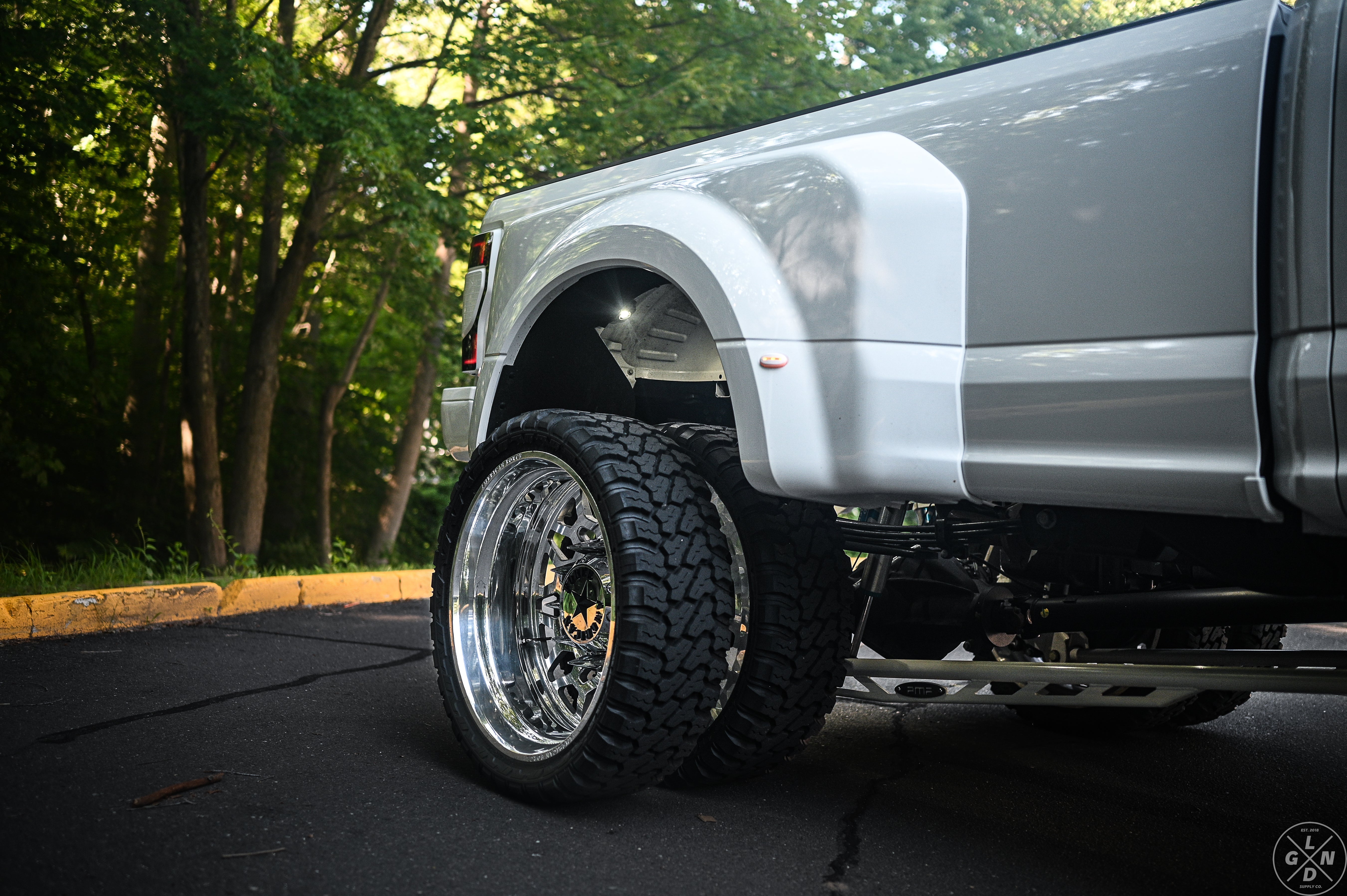
How to Choose the Right Wheel Width for Your Car or Truck
By Daren Foertsch
When you’re swapping out your stocks, choosing the right wheel width is just as important as selecting the style or finish. If you’re looking to improve performance, stance, or off-road capability, getting the right fitment is key to making sure your car or truck not only looks great—but still performs optimally.
When you’re shopping for wheels, the width measurement is usually right after the diameter, like in an 18x9 wheel. That “9” refers to the width, measured in inches from the inner lip to the outer lip of the wheel. While diameter often gets more attention, width plays a huge role in how your tires fit and how your vehicle handles out on the road.
That’s because wheel width plays a major role in tire fitment, grip, and overall driving dynamics. If the wheels are too narrow or too wide for your tires, you may experience distorted tire shapes, uneven tread wear, or even reduced traction. On the flip side, getting the width just right can unlock better handling, more aggressive styling, and improved stability—especially when cornering or accelerating.

So how do you choose the right width? It starts with knowing your vehicle's original wheel specs. Manufacturers usually provide a recommended wheel width range that works well with your car or truck’s suspension and body. This ensures safety, proper clearance, and ideal performance. If you’re not sure what your stock specs are, a quick search online or a glance at your owner's manual will point you in the right direction.
Once you have your baseline, it’s important to match wheel width with the right tire size. Every tire has a recommended width range for the wheels it can be safely mounted on. For example, a 275/60R20 tire might require a wheel between 8.5" and 10" wide. Choosing something outside that range can not only compromise performance but also your safety.
Of course, the “right” width often depends on what you want out of your build. If you’re going for performance, a wider wheel—think 8.5” to 10.5”—will let you run wider tires for more grip and sharper handling. On the other hand, off-roaders may choose slightly narrower wheels for better sidewall flex, while daily drivers tend to stick closer to stock sizes for comfort, efficiency, and long-term reliability.

It’s also important to think about your suspension setup and wheel offset, especially if you’ve lifted, lowered, or otherwise modified your ride. A wider wheel with the wrong offset can push your wheels too far out or pull them in too close, leading to rubbing issues or poor handling. That’s where having expert guidance can make all the difference—something we’re always happy to offer at Legends Auto Parts!
Here’s some advice from the pros: don’t go overboard with width unless you’ve got the right mods to support it. Always double-check that your tire and wheel pairing is within safe limits. And if you're ever unsure about the best setup for your vehicle, reach out to us—we’re here to help! Our team is ready to guide you through the process and make sure you get the perfect fitment the first time.
We carry a massive selection of wheels in all widths, finishes, and styles—built to match whatever you're driving and however you’re building it. Whether you’re chasing performance, off-road capability, or pure street presence, we’ve got what you need to make your ride legendary!
- Choosing a selection results in a full page refresh.
Store Info
Active Hours: 9:00 AM To 5:00 Pm (Mon To Fri)
Phone: (475) 227-5381
Email: sales@legendsautoparts.com
_______________________
150 Universal Dr, North Haven, CT 06473
*Location Not Open to the Public
Policies
© 2025, Legends Auto Parts
!



 Quick Ship
Quick Ship
 Universal
Universal















